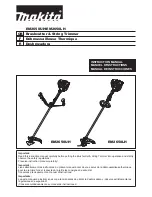
6
W
hen you are going to make a measurement of any
kind, you need to ascertain that what you measure is
indicated correctly by your measuring device. The pro-
cedure of making a measuring device measure correctly, is called
calibration.
For sound level meters and -analysers, hereinafter all re-
ferred to as sound measuring instruments, calibration is no less
than paramount – since sometimes legal action will be taken
based on the sound and noise levels measured!
The use of calibrators date back to those days when it was
easier to design a stable calibrator than a stable sound level
meter. Today, sound measuring instruments generally are as
stable as calibrators.
However, measuring microphones are delicate devices de-
signed to fulfil all specifications required. Hence they are vul-
nerable and easily subject to damage unless great care is taken.
What Is a Calibrator for?
One may therefore say that a calibrator is just as much a
device for verification of proper operation as it is a device for
readjustment of the sensitivity of sound measuring instruments.
Whenever you are going to make measurements in accord-
ance with applicable standards, calibration is always required
before you start measuring. Some standards require calibration
to take place after the measurement as well! The former is to
ensure that correct values are acquired, while the latter serves
to confirm that nothing has changed during the measurement
session.
The Calibration Process
To calibrate a sound measuring instrument we use a
sound cali-
brator
. A sound calibrator is designed to produce a known sound
pressure level when used correctly together with the measuring
microphone of the sound measuring instrument.
All sound measuring instruments of the quality levels con-
sidered here, feature some way of sensitivity adjustment. Some
have a small potentiometer that can be adjusted with a screw-
driver, while others do it in software.
If the level indicated by your sound measuring instrument
deviates from the output level of the calibrator, the sound meas-
uring instrument sensitivity is adjusted until the reading coin-
cides with the calibrator’s output level. The sound measuring
instrument is then said to be
calibrated
.
In case the level deviates significantly from earlier or nomi-
nal values, a thorough check of the instrumentation will be
needed.
Internal Reference Calibration
Some sound measuring instruments offer the ability to
calibrate by means of an internal reference oscillator. Al-
though it may sound convenient, this method is not at all
recommended, neither is it regarded as sufficient when
measuring according to applicable standards.
The most vulnerable part of a sound measuring instru-
ment is always its microphone. If dropped on the floor, for
instance, damage is likely. This will, however, not be de-
tected when calibrating by means of an internal oscillator.
The oscillator signal will pass through virtually every part
of the measuring chain, except the microphone cartridge.
Hence, the most vulnerable part will not be exposed to
the calibration, which in turn is why the method should be
avoided.
Tip:
As a general rule, use a calibrator of the same class
or higher (i.e. same, or lower class/type number) than
your sound measuring instrument. Otherwise, the accu-
racy of your acquired measurement data will be affected.
Содержание nor1251
Страница 2: ......
Страница 3: ...user documentation nor1251 class 1 sound calibrator ...


































